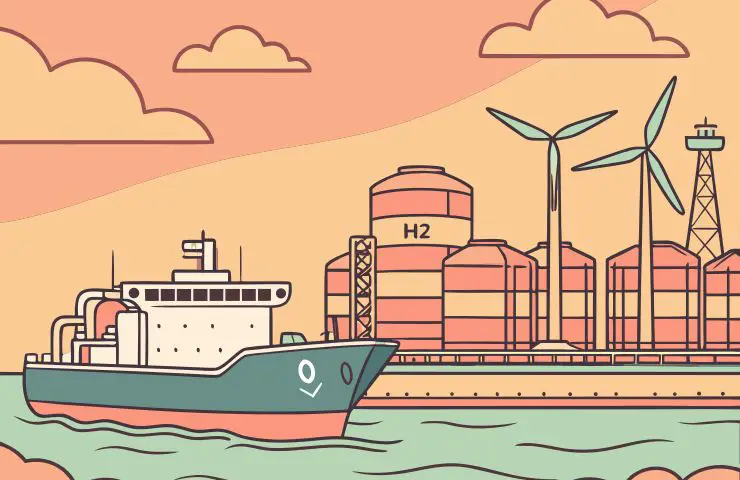
Hydrogen Infrastructure Push: Rotterdam Launches Market Consultation for Import Terminals
November 12, 2025Port of Rotterdam Authority has kicked off a market consultation to fast-track the development of import terminals for hydrogen and carriers like ammonia, methanol and LOHCs. They’re zeroing in on everything from permitting snags to technical specs, and they’re asking for industry feedback by 16 January 2026. That input will help shape the port’s roadmap to knock down barriers and turbocharge the roll-out of robust hydrogen infrastructure.
Key takeaways
- This consultation is all about import terminals—the crucial link between overseas supply and Europe’s growing appetite.
- Insights on streamlining permits, harmonising technical standards and unlocking financing will guide the Authority’s next steps.
- It’s central to Europe’s push for industrial decarbonization and lines up with Fit for 55 and REPowerEU targets.
- Big economic upsides include a surge in construction and operations jobs and a magnet for international investors.
- Hurdles remain: technical integration challenges, safety protocols, regulatory alignment and bringing local stakeholders on board.
Why now matters
Europe’s hydrogen demand is set to climb from about 10 million tonnes today to over 20 million by 2030. That spike means import volumes have to ramp up fast. Right now, Rotterdam handles mostly pilot-scale shipments of green hydrogen and ammonia. Landing large-scale terminals is vital if the port wants to deliver on government ambitions for green hydrogen as the backbone of a zero-emission economy.
Connecting to the European hydrogen backbone
Rotterdam isn’t flying solo. It’s a pivotal node in the Northern European Hydrogen Backbone, a network of pipelines stretching from Spain through Germany. Imported hydrogen and carriers offloaded here can be compressed and fed into this grid, reaching industrial clusters in the Ruhr, Belgium’s chemical parks and beyond. Designing terminals to match pipeline specs smooths the handoff and maximises throughput.
Import terminals under the microscope
These hubs are the entry points for different hydrogen formats:
- Gaseous or liquid hydrogen: Needs cryogenic storage and high-pressure handling gear.
- Ammonia carriers: Cheaper to ship by volume but require on-site cracking units to extract hydrogen.
- Methanol and LOHCs: Stable during transport but call for dehydrogenation infrastructure and catalyst systems.
Each option carries its own capex and ops profile. This consultation is the perfect time to surface real-world cost data, integration best practices and maritime safety standards.
Financing and partnerships
Investors and terminal operators have flagged uncertainties around permitting timelines, fees and environmental impact assessments. The Authority is exploring public-private partnership models, co-funding through the EU’s IPCEI framework and national grant schemes. Pinning down these details can sharply reduce the weighted average cost of capital for new terminals.
Policy momentum
On the national front, the Dutch government has earmarked €2 billion for hydrogen infrastructure under its 2030 roadmap. At the EU level, the Hydrogen and Decarbonisation Package backs cross-border projects with co-funding. This strong policy foundation opens the door for proposals like accelerated depreciation or hydrogen offtake guarantees to de-risk investments.
Local green synergy
While imports take centre stage, Rotterdam is also ramping up domestic electrolysis capacity powered by offshore wind. A hybrid model—mixing imported volumes with home-grown green hydrogen—could balance supply swings, tap into existing grid connections and boost overall system resilience.
Regulatory alignment
Hydrogen imports touch multiple rulebooks—from ISO/TC197 safety norms to EU environmental permits. A key aim of the consultation is to map out where divergent standards are causing delays and propose a harmonised framework. Faster policy alignment means quicker approvals and earlier revenue streams for terminal operators.
Engineering considerations
Designing a multipurpose terminal involves advanced metallurgy to handle cryogenic temperatures, explosion-proof electrical setups and AI-driven leak detection systems. Industry players can chip in hard data on maintenance cycles, safety incidents and dispatch logistics to fine-tune the technical specs.
Economic and environmental ripple effects
Speeding up the hydrogen supply chain in Rotterdam could:
- Generate up to 5,000 jobs during peak construction and more than 1,000 permanent roles in operations and maintenance.
- Attract billions in foreign direct investment, reinforcing the port’s role as a gateway for sustainable energy.
- Encourage local green industries—steel, chemicals and refining—to switch to low-carbon feedstocks.
- Slash CO₂ emissions by millions of tonnes each year once imported green volumes displace grey or blue hydrogen.
Skill and workforce development
Building and running these terminals will demand a skilled workforce. The consultation invites training providers to pitch initiatives for upskilling local talent in areas like hydrogen safety, high-pressure systems and catalyst handling. A coordinated approach ensures pipelines, compressors and converters are never starved for qualified staff.
Community and land-use considerations
Despite clear benefits, nearby communities may raise concerns about increased traffic, land reclamation and noise. Bringing local voices into the conversation early can smooth the path for expansion. The Authority has pledged transparent stakeholder sessions, ongoing environmental monitoring and fair compensatory measures where needed.
Environmental footprint
Here’s the twist: while hydrogen is a clean end-use fuel, terminal operations themselves aren’t emissions-free. Feedback may push for carbon offsetting—like electrifying terminal equipment or using shore power for docked vessels—to keep the local footprint in check. Early adoption of these measures could set Rotterdam apart.
Timeline and next steps
The consultation runs until 16 January 2026. By mid-2026, the Authority plans to publish a summary report outlining proposed regulatory tweaks, financing models and standardised technical specs. If approvals can be streamlined, the first commercial import terminals could break ground by 2028 and start operations in the 2029–2030 window.
Strategic impact
This isn’t just port planning—it’s a statement of intent. Rotterdam aims to lock in market share before rival hubs finalise their hydrogen strategies. By tackling the toughest bottlenecks head-on, it underscores why port-based hydrogen production and distribution hubs will be linchpins of Europe’s net-zero future.
About Port of Rotterdam Authority
The Port of Rotterdam Authority manages one of Europe’s largest and most dynamic seaports. With a portfolio spanning logistics, infrastructure and pioneering green hydrogen projects, the Authority is at the forefront of industrial decarbonization and sustainable energy innovation.


 With over 15 years of reporting hydrogen news, we are your premier source for the latest updates and insights in hydrogen and renewable energy.
With over 15 years of reporting hydrogen news, we are your premier source for the latest updates and insights in hydrogen and renewable energy.